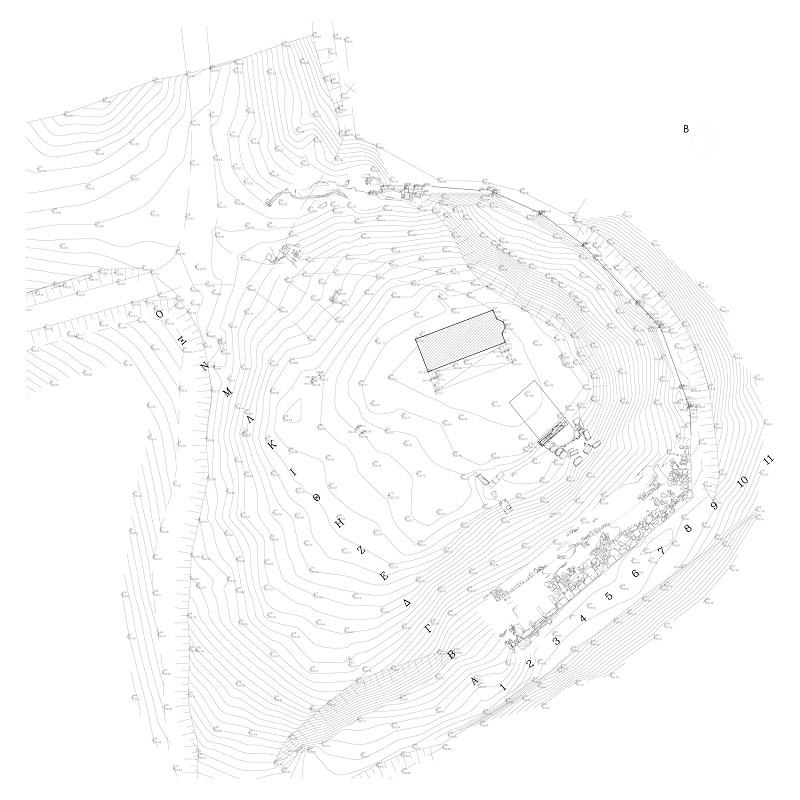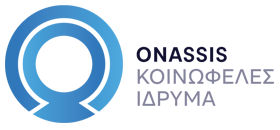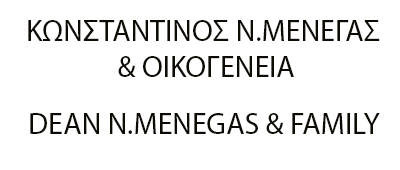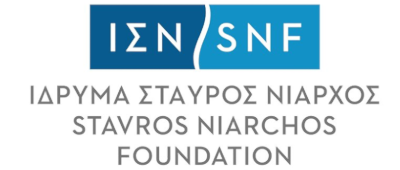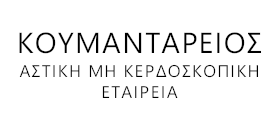Excavation Reports
2008 Report
31-10-2008 13:30In accordance with the decision No. YPPO/GDAPK/ARCH/A2/F42/76784/2341-10.10.2008 of the Department of Greek and Foreign Scientific Institutions, Organizations and International Matters of the Ministry of Culture, regarding the ongoing research project in the Spartan Sanctuary of Apollo Amyklaios, the following works were carried out in 2008:
- The measured drawing and the architectural study of the monumental external Peribolos was completed. Aim of these works, inter alia, is the possibility of a future partial restoration, and the detailed architectural study prepared by the architects Maria Magnisali and Themistoklis Mpilis. Concurrently, excavations to find the northwest end of this wall continued. In this sector (X7), the last surviving course of stones was put back in place on the preserved part of the foundation. Located in the same area (Sectors N3, X3-4) were traces from later constructions, a cistern and a drain in which the lower half of a Late Roman inscribed herm had been used as building material, and part of the stylobate of an Archaic Doric colonnade, from the architectural members of the Throne of Apollo. The remains of the later constructions should be associated with the poorly investigated Early Christian basilica, which Christos Tsountas had located in 1890. During removal of the fill of the Peribolos, abundant sherds were collected, mainly dating from the Geometric period, and in the later buildings two coins and a finger ring were found.
- The excavation was completed on the south side of the Sanctuary, aimed at revealing the previous, also monumental, internal retaining wall of the Geometric period (W. 1), of length 30 m. and thickness 1.80 m. Its dimensions as well as the large number of stones found fallen on both its inner and outer face, confirm that it is a construction of monumental size. During removal of the fill, apart from the abundance of pottery, mainly of the Geometric period, a large number of bronze objects of the same period was found, among which statuettes of a standing female figure and of a bull, an axe of small dimensions and a pin, which were conserved in the laboratory of the V EPCA.
- Systematic checking of the dump from Tsountas’s excavations, which ran along the east side of Agia Kyriaki hill, at a distance of 5 m. from the external Peribolos, was completed. With these works, a path 3.00 – 8.00 m. wide was formed, suitable even for the occasional visit and tour of the archaeological site. From the sieving of the soil, several finds were retrieved, among them a bronze bowl (phiale), fragments of roof tiles with stamped inscriptions in which traces of the words ΑΠΟΛΛΛΩΝΟΣ ΕΝ ΑΜΥΚΛAΙΟΙ can be detected, as well as parts of glass vessels from the Roman period.
- Professor Manolis Korres, in collaboration with the architects Th. Mpilis and M. Magnisali, thoroughly studied the limestone blocks of the colossal pedestal that supported the 13 m.-high cult statue of Apollo and had been reused in the foundation of the Early Christian basilica uncovered in sectors D 4, 6-7.
- The measured drawing, photographing and documenting of the architectural members incorporated in the fabric of the church of St Kyriaki continued.
- For the protection of the archaeological site, the expropriated area was fenced in its entirety, so as to deter temporarily any damages and other vandalisms, until the final enhancement of the Sanctuary is decided.
- The measured drawing, photographing and documenting of the architectural members deposited in the courtyard of the Sparta Archaeological Museum continued.
- Dr Kokkorou-Alevras, Professor of Classical Archaeology at the University of Athens and Dr G. Maniatis, Head of the Archaeometry Laboratory of the National Research Centre “DIMOKRITOS”, completed the works on locating and identifying the quarries from which the marble structural elements of the buildings in the Sanctuary came. Specifically, there are two quarries on Mt Taygetos, at the localities “Gynaika” and “Platyvouni”. Appended are the results of the preliminary examination carried out by G. Maniatis and D. Tambakopoulos. This research will be useful for finding the necessary material when the imminent restoration of monuments is decided.
- In the framework of research aimed at locating additional architectural members from the monuments of the Sanctuary, a database was created and the sites of the Byzantine and Post-Byzantine monuments in the wider area were plotted on a general map. This work is in progress.
- In October this year, the head of the excavation, Dr Stavros Vlizos, presented the conclusions of research over the period 2005-2008, in lectures delivered at the archaeological institutes of the universities of Mainz, Berlin, Bonn, Munich and Vienna.
